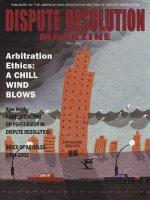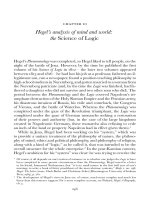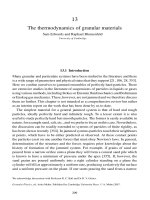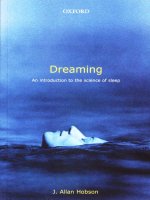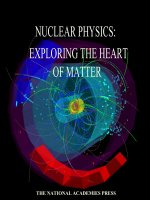metal exploring the science of everyday materials
Bạn đang xem bản rút gọn của tài liệu. Xem và tải ngay bản đầy đủ của tài liệu tại đây (2.19 MB, 27 trang )
Metal
Electronic book published by ipicturebooks.com
24 W. 25th St.
New York, NY 10010
For more ebooks, visit us at:
All rights reserved
Text copyright © 2000 Nicola Edwards and Jane Harris
Photographs copyright © 2000 Julian Cornish-Trestrail
No part of this book may be reproduced or transmitted
in any form or by any means, electronic or mechanical,
including photocopying, recording, or by any
information storage and retrieval system, without
permission in writing from the publisher.
e-ISBN 1-59019-856-5
Library of Congress Cataloging-in-Publication Data is available
ISBN 0-7136-5345-0
Exploring the science
of everyday materials
Nicola Edwards and
Jane Harris
Photographs by
Julian Cornish-Trestrail
2
Metals have
lots of different
uses. We’ve
collected these
metal objects.
Look at all
the shapes
and sizes.
3
I‛ve found
some tiny
objects.
4
Metals come
from under
the ground.
Most metals
are found
in rocks,
which are
drilled out
and crushed.
5
The rocks
are heated
to make the
metal melt.
When the
metal cools,
it turns into
a solid block.
6
There are many different types
of metal. Very strong metals
are used to make bridges,
boats and cranes.
This metal
climbing frame
is solid and
sturdy.
7
Some metals are light and bendy.
I‛ve bent
this wire into
star shapes.
I can‛t bend
this metal.
My metal must be
bendier than yours.
8
This metal saucepan
is shiny and heavy. It
has smooth surfaces so
that it’s easy to clean.
I can cut
through the
paper easily.
It feels cold
and hard.
These metal scissors
have a sharp edge.
9
This jumping ghost has a metal
spring inside it.
I push the
spring down…
…and watch
the ghost jump!
10
Metals can be made into
all kinds of shapes.
This ower pot
was made in
a mould.
The metal is
heated, then poured
into a mould. As the metal cools
down, it sets into the shape of the mould.
11
My box is made of at pieces of metal.
They have been bent into shape and
joined together.
The box
is light but
strong.
12
Metal allows heat to travel through it.
Let’s nd out if heat travels best through
wood, plastic or metal.
We‛ve put a wooden
spoon, a metal spoon
and a plastic spoon in
a jug of warm water
for two minutes.
13
The plastic
spoon and the
wooden spoon are
still cold.
But the metal
spoon is warm!
14
Iron and steel are magnetic. This means that
a magnet will pull these metals towards it.
We‛ve made
a magnetic
shing rod!
We tied
a steel magnet
on to a piece
of string.
15
We’re nding out which
of these metal objects
are magnetic.
Let‛s try
the nail.
The magnet‛s
lifting the nail.
Look!
16
Some metals will
rust if they are
wet for a
long time.
The rain has
made it turn brown
and rusty.
This trowel
has been
left outside.
17
Our cutlery is made of stainless steel.
Other metals were added
to the steel to stop it
from rusting.
So we can wash it
up again and again!
Oh no!
18
This kitchen tool is made
of metal. What will
happen if I drop it?
It bounces
and it makes
a noise.
19
Some musical
instruments are
made of metal.
I’m going to
clash these
metal cymbals.
What a noise!
My hands
feel tingly.
20
We’ve been for a walk
around the school to
look for metal objects.
We’ve made a list.
21
I wonder if any of the objects
could be made from other
materials. These
are our ideas.
I can‛t think
of anything else
strong enough for
making keys.
22
It’s time to tidy away. Many
metal objects can be recycled
and made into new things.
We‛ve made this
recycling box for
our school.
23
We’ve collected
lots of cans
to put in
the box.
This sign shows that
it can be recycled.

